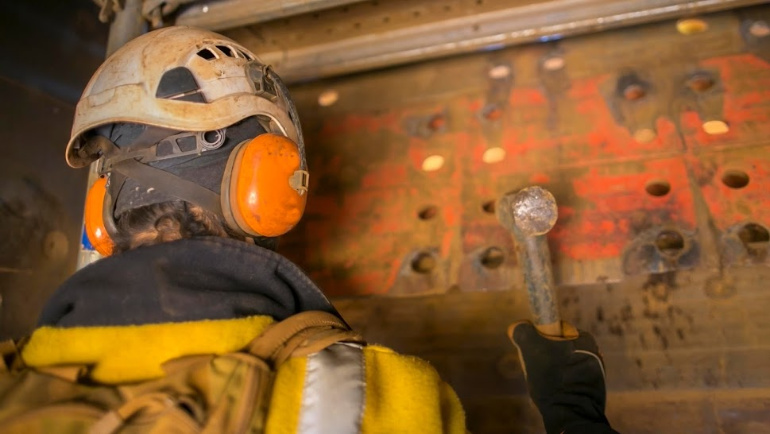
High levels of noise exposure is one of the most common occupational hazards in the United States and continues to be a pervasive health threat to workers.
According to the National Institute for Occupational Safety and Health (NIOSH), about 30 million workers are exposed to potentially damaging noise at work each year. And construction is one of several industries where such hazardous exposure takes place.
“As a matter of fact, three out of every four construction workers are overexposed to hazardous noise levels,” said Emrah Kazan, lecturer in Wayne State’s Department of Civil and Environmental Engineering. “A critical health hazard associated with high levels of occupational noise exposure is permanent hearing loss, a disabling injury which cannot be corrected through surgery or the use of a hearing aid.”

Kazan and fellow researcher Mumtaz Usmen, professor of civil and environmental engineering, recently received a U.S. Department of Labor grant totaling $118,112 to help increase workers’ awareness of the hazards associated with occupational noise and its health effects. Over the past decade, the pair have combined to research the various factors that affect occupational safety and health. Through numerous grants provided by Department of Labor, they develop educational and training materials to mitigate these hazards.
“This training grant is aimed at helping employees realize what is necessary to protect themselves from harmful noise exposure, while also assisting employers to understand their obligations to protect employees, and learning what is required to get in compliance with the related standards,” Kazan said.
Construction sites have many tasks that are significant sources of noise exposure. Almost all trades on job sites use or work around noisy equipment in performing their daily activities, Usmen said, which result in risks of being exposed to dangerous noise levels.
Besides noise-induced hearing loss, occupational noise exposure may also lead to tinnitus (ringing in the ear), Usmen said, and create physical and psychological stress and anxiety for workers. Further, excessive noise levels have been found to reduce job productivity, interfere with communications between workers, and contribute to accidents and injuries by making it difficult for workers to hear warning signals on construction sites.
Overall, the annual total costs of fatal and nonfatal injuries in the U.S. construction industry alone are estimated to be more than $10 billion. This figure does not take into account the latent diseases caused by harmful chemicals, substances and other environmental exposures.

“Construction is recognized as a high-hazard industry in the nation, as well as globally,” Usmen said. “A wide range of activities expose workers to physical and health hazards. If safe and healthful work places are not provided to employees, the consequences can be severe and costly.”
Usmen has been engaged in occupational safety and health research and education for more than three decades, presenting papers coauthored with his students for disseminating their research findings, serving on national committees focused on the subject, and teaching short courses on construction safety and health worldwide. He has also served extensively as a legal expert in injury cases.
Kazan has worked with several industry groups on projects involving safety and the use of information technology as a management and training tool. He also investigates how effectively the latest technology tools — 3D scanning, virtual and augmented realities, drones, etc. — can be integrated to the workflows in construction engineering and project management to improve project performance.
The pair have trained more than 3,000 construction industry employees and employers through these grants. In addition, the research team has advised a large number of M.S. and Ph.D. students on different topics related to occupational safety and health, while also involving the students in training program development and delivery.
“These grant projects impact not only the local construction industry, but also nationwide,” Kazan said. “With this latest grant, a training program is being developed that will provide workers with the knowledge of safe work practices and engineering controls that reduce the risks of occupational noise exposure.”
